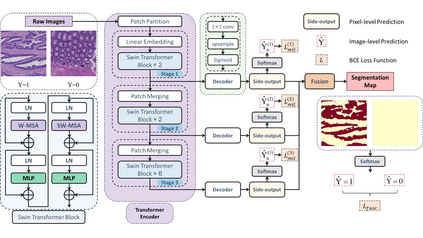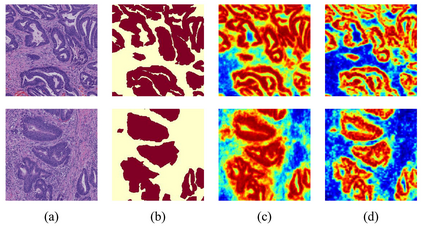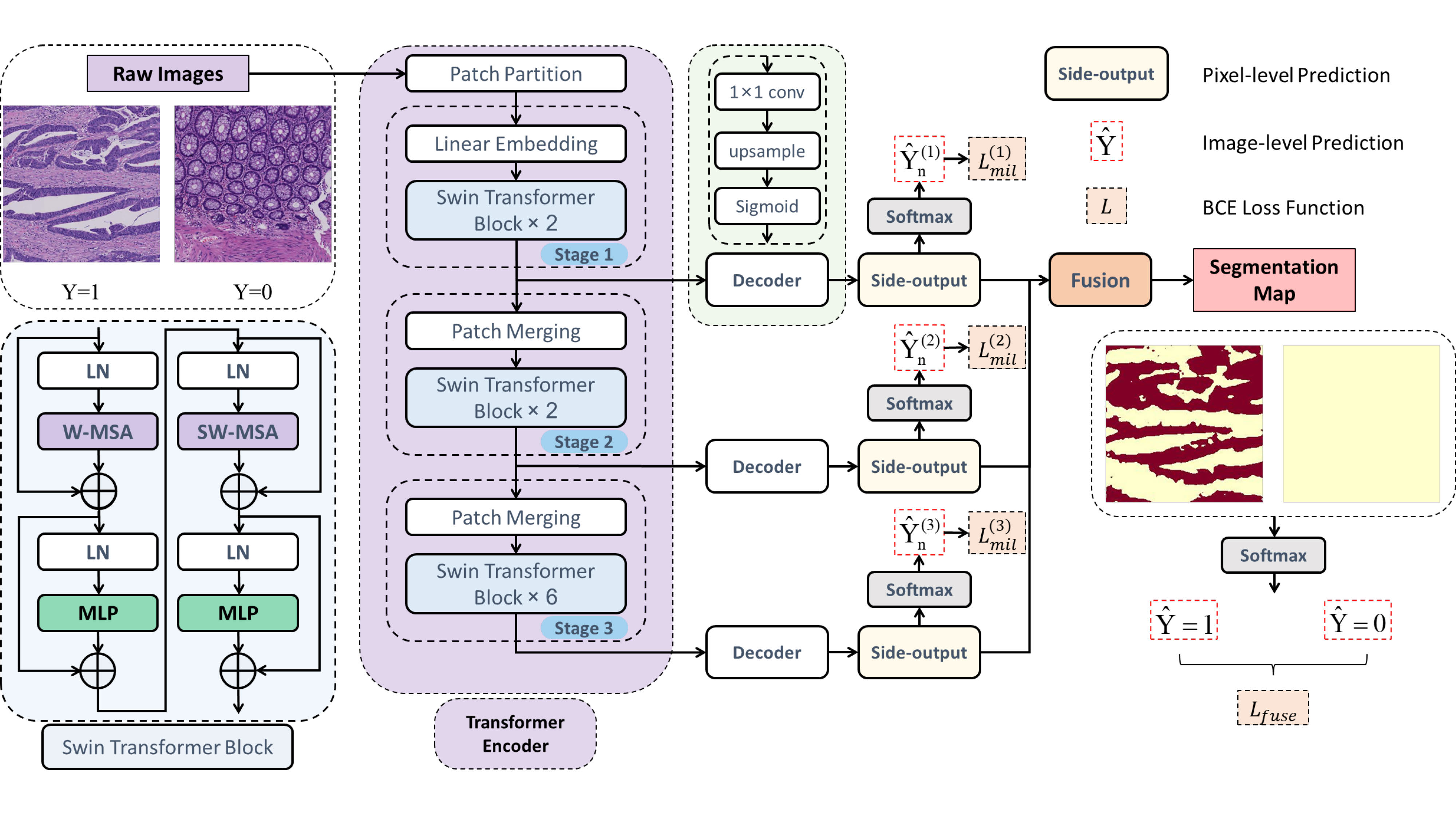Hispathological image segmentation algorithms play a critical role in computer aided diagnosis technology. The development of weakly supervised segmentation algorithm alleviates the problem of medical image annotation that it is time-consuming and labor-intensive. As a subset of weakly supervised learning, Multiple Instance Learning (MIL) has been proven to be effective in segmentation. However, there is a lack of related information between instances in MIL, which limits the further improvement of segmentation performance. In this paper, we propose a novel weakly supervised method for pixel-level segmentation in histopathology images, which introduces Transformer into the MIL framework to capture global or long-range dependencies. The multi-head self-attention in the Transformer establishes the relationship between instances, which solves the shortcoming that instances are independent of each other in MIL. In addition, deep supervision is introduced to overcome the limitation of annotations in weakly supervised methods and make the better utilization of hierarchical information. The state-of-the-art results on the colon cancer dataset demonstrate the superiority of the proposed method compared with other weakly supervised methods. It is worth believing that there is a potential of our approach for various applications in medical images.
翻译:病理图像分解算法在计算机辅助诊断技术中发挥着关键作用。 发展监督不力的分解算法可以缓解医学图像说明问题,即它耗时费时费力。 作为监督不力的学习的子集,多实例学习(MIL)已证明在分解方面是有效的。然而,MIL的事例之间缺乏相关的信息,这限制了分解性表现的进一步改进。在本文中,我们提出一种新颖的、监督不力的方法,用于对病理学图像进行像素分解,将变异器引入MIL框架,以捕捉全球或长期依赖性。变异器多头自省确定了各种事例之间的关系,解决了在MIL中各情况独立的缺点。此外,还引入了深入的监督,以克服受监督不力的方法对说明的局限性,并更好地利用等级信息。结肠癌数据集的状态技术结果表明,拟议方法优于其他受监督薄弱的方法。值得相信,我们的各种应用方法具有潜力。







